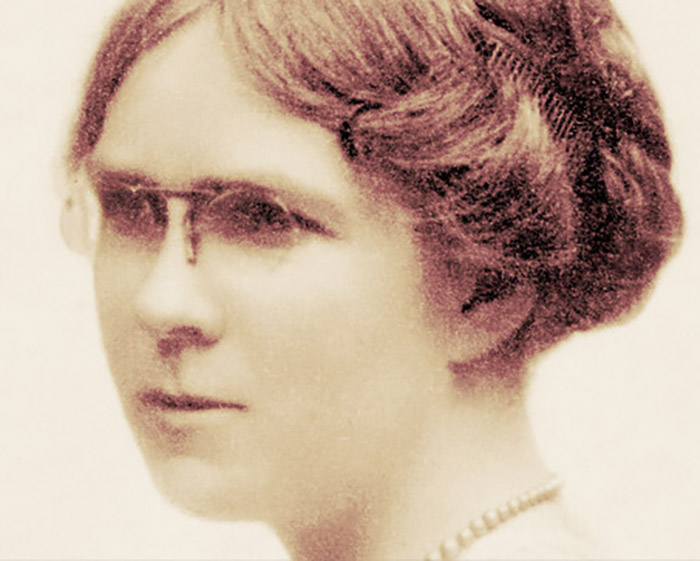Gerald Duckworth’s publishing company brought out a little book by an unknown writer about a student teacher in Germany. It was called Pointed Roofs, and its author was Dorothy M Richardson. The story was narrated entirely through the consciousness of the heroine, Miriam Henderson. A reviewer in the Manchester Guardian, although sure that the novel was “almost startlingly original”, could not pin down why, concluding rather helplessly: “It is a novel that no sensitive reader will forget. Its charm cannot be communicated.” The novel was the first of a series called Pilgrimage, a gigantic 13-volume semi-autobiographical narrative that became a byword for introspective modernist experimentation. It was the first novel to be labelled “stream of consciousness”, in a review by May Sinclair – a phrase that had been popular with psychologists for some time but hadn’t yet been applied to literature. And a phrase Richardson hated.
Pilgrimage, Richardson's life-long experimental novel, began appearing in 1915, at about the time Joyce and Proust were engaged in similar experiments. Her writing was the first to be described as "stream of consciousness," and Virginia Woolf credited Richardson with the invention of something that Woolf herself would go on to make famous -- "the psychological sentence of the feminine gender."
Pilgrimage is autobiographical, covering twenty-five years of Richardson's remarkable and moving life. Living alone, in poverty and near-isolation, Richardson set out to find a literary style which could tell the story of a young woman coming into possession of herself, and avoid the dressings-up of "the romantic and realist novel alike." She also wanted a genuinely female voice: "Bang, bang, bang, on they go, these men's books, like an L.C.C. tram, yet unable to make you forget them, the authors, for a moment." She gave Henry James good marks for psychological depth, but failed him on male ego -- "a non-stop waggling of the backside as he hands out, on a salver, sentence after sentence.... So what? One feels, reaching the end of the drama, in a resounding box, where no star shines and no bird sings." Richardson's goal was a style that allowed the author to disappear, and allowed art "its power to create, or arouse, and call into operation ... the human faculty of contemplation."
She left home as a teenager, and soon learned "what London can mean as a companion." She was attracted to those fomenting change -- Fabians, Suffragettes, Anarchists -- but so determined for independence that she could not join any group. When her one affair resulted in pregnancy and then miscarriage, she was distraught to lose the baby but glad to lose the father -- H. G. Wells. She lived in an attic, on the edge of fame in all ways: two blocks away from where the Bloomsbury Group met; a half-dozen blocks from where Mary Woolstonecraft had, a century earlier, written Vindication of the Rights of Women; across the alley from where, at night, she could see W. B. Yeats writing by the light of "two immensely tall, thick white candles." Later, when she married the painter Alan Odle, one much younger and even more impoverished than herself, the only affordable recreation from their day's work would be a late night bus ride: "We went right down into the deserted city and over London Bridge, and saw a very nice young golden moon." (from Bowler and Steve King)

No comments:
Post a Comment